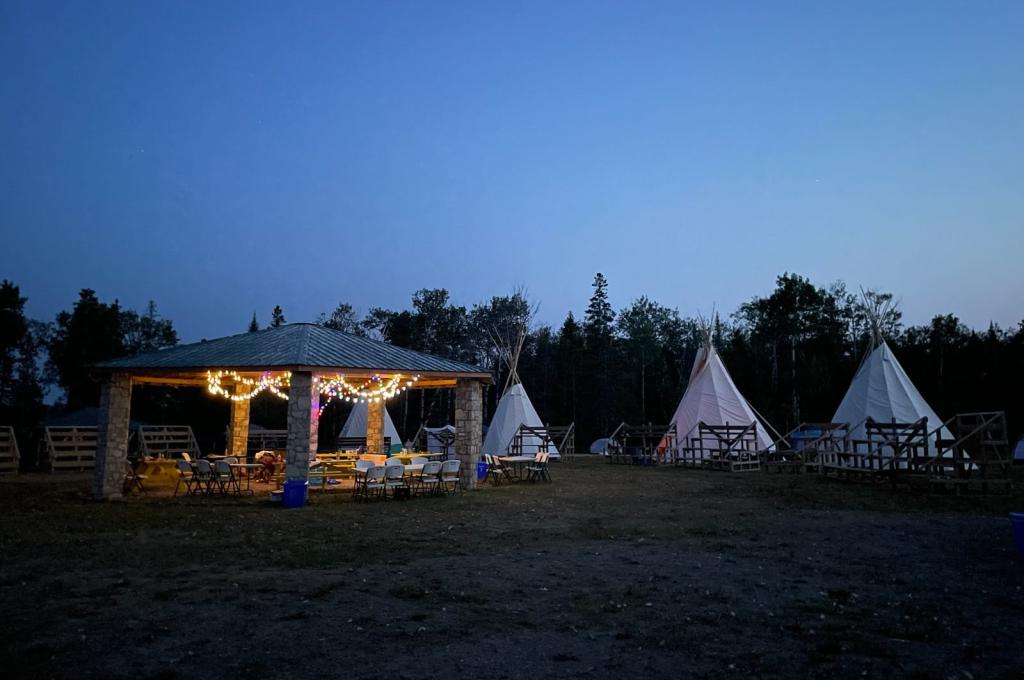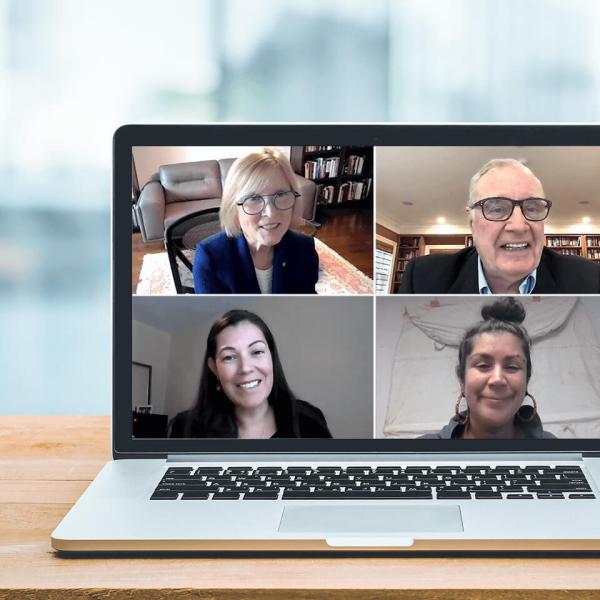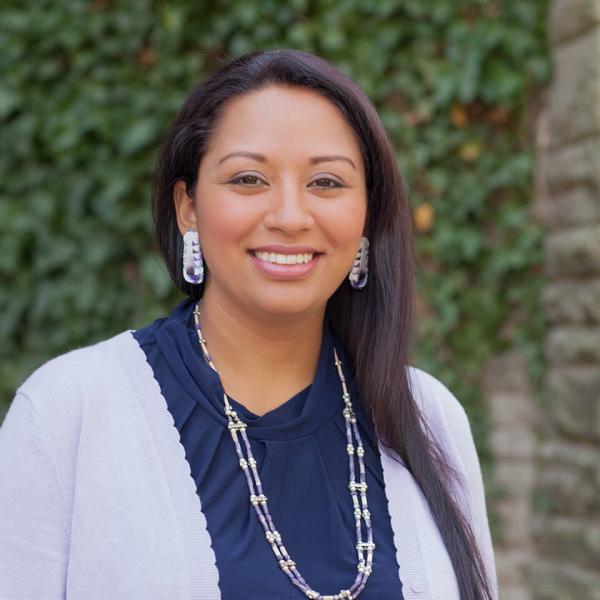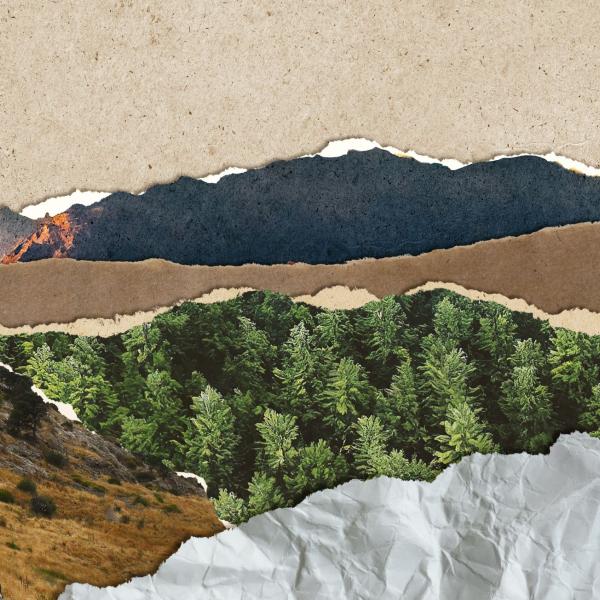Jesse Popp does what you might expect a wildlife ecologist to do — tracks the behaviours of animals and uses scientific methodologies to learn about their population decline.
But Popp’s approach to studying large mammals like wolves and moose — which brings her and her team to the Land in First Nations in Ontario including Wiikwemkoong, Batchewana and Magnetawan — also veers away from that typical path in unexpected ways.
Popp recalls a recent example of a typical day of research. She and her research team were invited to Wiikwemkoong by the community’s Department of Lands and Natural Resources Species at Risk coordinator, Elder Theodore Flamand. The original invite was for the researchers to help him implement a youth camp, meant to connect First Nation youth to the Land and learn about Popp’s research projects.
Popp, who is also a member of Wiikwemkoong, recalls that day as not going as planned. Her team, who works on several different research projects at once, wanted to use the opportunity of being on the Land to include the youth on various data collections. One wanted to do sweep netting to see insects, while another wanted to build bat houses. But once they arrived at Flamand’s office, he had a different proposal for Popp and her team. “All of a sudden, Theodore says, ‘Oh, by the way, the kindergarten class invited you over to come in and do an interactive activity.’”
Traditional ceremonies are part of the work
They accepted the invitation, and after the class, Elder Flamand updated the team that the youth camp would start the next day, and in the meantime, he suggested they attend a wolf ceremony. It was a burial for a wolf that had been part of their research and had died of natural causes, and Popp’s team, along with several elementary school classes, Chief and council, Elders, and Species at Risk representatives, took part in the traditional ceremony. Popp says the group went to show respect for the animal, since it allowed them to enter its life and to thank it for the information it provided them. After the ceremony, Flamand took the researchers fishing on the water through the territory of Point Grondine, ending the day with fish and chips at his favourite place.
Many days deviate from the plans, says Popp, who leads the Wildlife, Indigenous Science, Ecology (WISE) Lab at the University of Guelph and is Canada Research Chair in Indigenous Environmental Science.
Popp’s research programs include as many people from the community as possible: Elders who can pass along their knowledge, and youth who learn about Land-based practices that haven’t been passed along yet.
“It doesn't seem very relevant to research, but it’s the process,” says Popp. “We’re building relationships, having fun, engaging in different things, learning from one another, co-developing and working together,” she says.
Her research focuses on large mammal population decline, solutions to reduce wildlife-train collisions, and most importantly, working with Indigenous communities to create monitoring programs and to discover what their pressing ecological research questions are. Some of that work currently includes studying the Eastern wolf, bats, moose, and other species at risk, including insects and plants.
Popp has devoted her research practice to weaving together Indigenous and Western ways of knowing, with collaboration at its heart. This means that when Popp goes into Indigenous communities to conduct research, her number one aim is to conduct her work in a good way. “In a good way” is the phrase that sums up, for many Indigenous people, how to move through spaces with respect and good intentions, while honouring the community and its values.
Gaining trust is vital
Her approach is deeply appreciated in the community. Elder Flamand has known Popp for about 10 years now — their paths crossed when they were both involved in a committee for elk restoration in Sudbury, Ont. — and he says that her inclusion of Indigenous ways, traditions and beliefs has gone a long way to gaining trust among other community members.
“I think that the individuals we work with — all the professors and Western educated people that come to our door and visit our reserve — they are starting to accept that we have to include our beliefs, in regards to moving forward together, and Jesse, she’s there to push that our ways have to be included into the final product,” says Flamand.
In recent years, Popp’s team and Flamand have worked together on the Mhiingaan Waat Saa Maa Jig (Those who walk with wolves) project, where they track the movements of wolves; a bat project that aims to identify bat species at risk and reconnect relationships between the community and bats; a pollinator-plant project, which looks at the insects and plants they pollinate; and many Land-based learning initiatives for youth.
“We essentially work with Indigenous Peoples and organizations, addressing environmental issues that are important to them,” says Popp. She adds that her lab does things a bit differently than the typical approach to research among Indigenous people “because of the harmful extractive approaches that have been done in the past, and unfortunately still [happen] today.” She’s referring to how researchers would take from communities — their resources, knowledge and more — and once they had their results, they’d leave without any further considerations.
Inclusive biodiversity research in action
Putting the community’s needs first, Popp ensures that her team shares preliminary results with the community and continues to do so throughout the process. They also engage in community events like Pow Wows, visit youth and talk about their work. At the end, they share their results and verify them with anyone who contributed their knowledge along the way. In addition to presentations, they offer multiple ways of sharing their findings, like having activities at events such as bringing photos from biodiversity monitoring camera traps to youth to see if they are able to identify the animals.
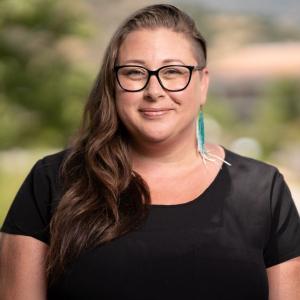
Popp credits CFI funding for making this work possible. “The work we do is all field work,” she says. “It’s all on the Land, it’s in community, and it’s in very remote areas. The CFI funding supported the key infrastructure needed to engage in on-the-Land activities like a truck, camping trailer, as well as field cameras, satellite phone and audio recorders.
The question Popp asks herself now is how to ensure the work can be done by the community.
"We’re developing toolboxes, we’re calling them — a set of instructions that a community can utilize to continue that work with the community engaged,” she says. That means including the community’s values and language and prioritizing the participation of youth and Elders. “They’re not just a set of instructions from a Western science perspective, but are created in ways that uplift your community.”
Kelly Boutsalis is a Mohawk journalist from the Six Nations of the Grand River reserve. Now living in Toronto, she devotes the bulk of her work to highlighting Indigenous stories.
The research project featured in this story also benefits from funding from the Canada Research Chairs Program, Environment and Climate Change Canada, the Natural Sciences and Engineering Research Council of Canada, Mitacs and the Social Sciences and Humanities Research Council .


